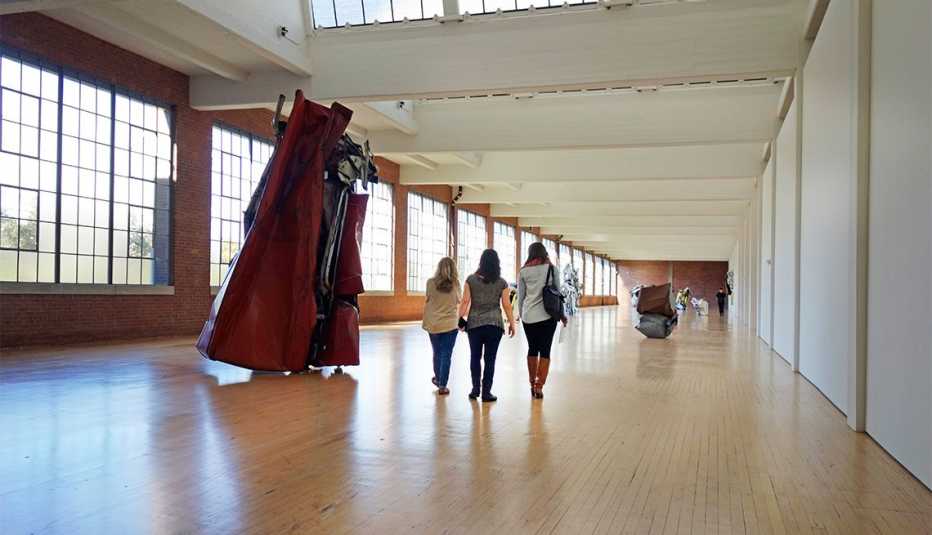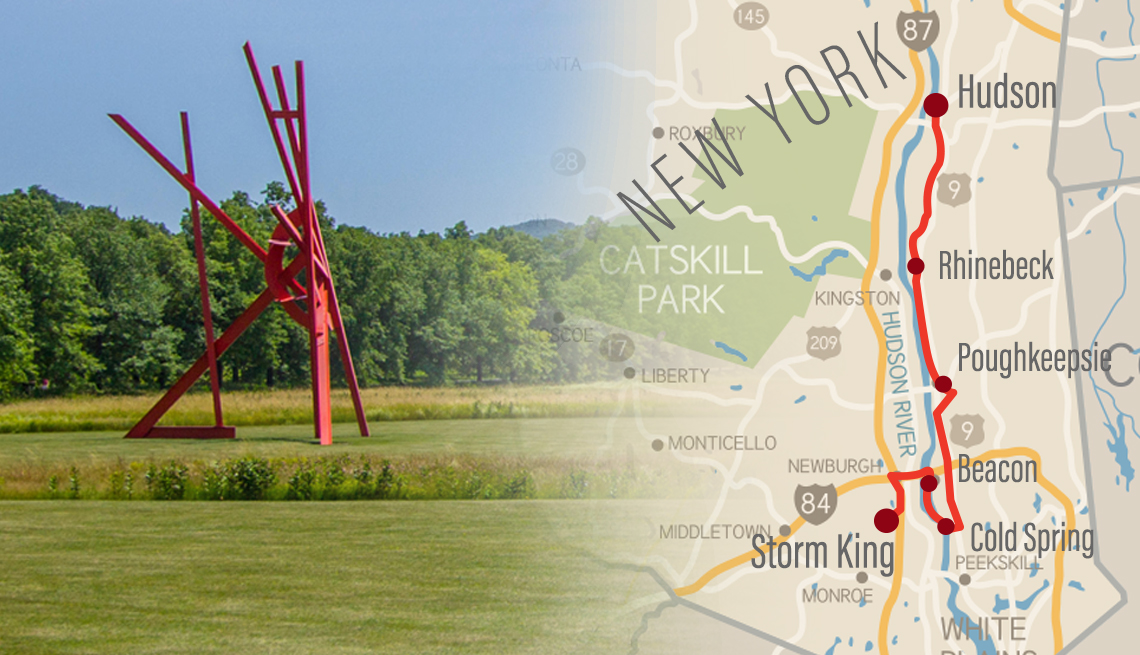AARP Hearing Center
The majesty of New York's Hudson Valley has been inspiring artists since Thomas Cole founded the country's first major art movement here in the early 19th century. Today the work of those pioneering landscape painters shares the stage with a cornucopia of creativity — from massive, contemporary sculpture to works by old masters and unique pieces crafted by local artisans. Embark on this five-day, art-centric road trip through the heart of the region the Hudson River School painters once considered the Center of the Universe, taking in these six must-see museums. A bonus: quaint towns and stunning natural scenery.


- How to plan an epic road trip
- Explore Southern Arizona
- Experience California's Highway 1
- South Carolina adventure
- Scenic Hells Canyon in Oregon
- Washington's San Juan Islands
- Michigan coast
- Art in the Hudson Valley
- Unique Southwest hotels
- Road trip quiz
- Money-saving tips
- 8 travel pros' trip ideas
- Travel news and vacation ideas
Day 1, First Stop: Storm King Art Center
Begin your journey 60 miles north of New York City at the Storm King Art Center in New Windsor, New York. Spread across 500 acres of verdant hills and rolling meadows, this open-air museum features a remarkable assemblage of contemporary sculpture and site-specific earthworks. Approximately 120 pieces from influential artists — including Alice Aycock, Mark di Suvero, Donald Judd, Ursula von Rydingsvard and Joel Shapiro — punctuate the bucolic landscape.
Storm King, which celebrated its 60th anniversary in 2020, was originally intended as a modest indoor museum dedicated to the work of the Hudson River School artists. But in 1967, the art center's founders, businessman Ralph E. Ogden and his son-in-law, Peter Stern, shifted gears after acquiring 13 monumental works from the estate of abstract expressionist sculptor David Smith. Inspired by the placement of Smith's sculptures in the grass outside the artist's Adirondacks studio, Ogden and Stern sealed their vision for Storm King as an outdoor gallery as well as its role in the stewardship and conservation of the surrounding landscape.
Arranged into four sections (Meadows, Museum Hill, North Woods and South Fields), Storm King impresses both with its physical size and the scope and scale of its art. Allow plenty of time — three hours or so — to immerse yourself in the experience. Breathe deeply of the fresh mountain air as you explore, dwarfed by towering sculptures that reflect the shifting light of day. The seven nearly 400-foot-long earthen swells of Maya Lin's “Storm King Wavefield” undulate across an 11-acre swath of terrain in South Fields.
Across the way, Andy Goldsworthy's 2,278-foot “Storm King Wall” snakes through the woods and winds around trees before disappearing into a pond and emerging again on the other side. On Museum Hill, eight of the collection's David Smith sculptures adorn the grassy lawn flanked by a trio of colossal, painted steel pieces by Alexander Calder. Isamu Noguchi's “Momo Taro,” a nine-part, 40-ton granite assemblage named for an ancient Japanese folk hero, perches nearby on a specially landscaped knoll.
You can't drive your car through the grounds, so be prepared to walk. You can also hop on the center's open-air tram, which makes stops at many of the major points of interest, or explore on a bicycle, which you can rent onsite. Although most pathways are easy to navigate, you'll encounter a few hills and rocky spots in certain areas, especially the upper parts of the North Woods section.


Next Stop: Beacon
Make the 25-minute drive northeast (part of the way on Interstate 84) to Beacon, a faded industrial town reborn as a vibrant haven for the arts. Its renaissance began in 2003 with the opening of Dia Beacon (the star attraction on tomorrow's itinerary) and the subsequent influx of young families and artistically minded city expats.
Spend the rest of your day browsing through the shops and galleries along Main Street, perhaps finding some must-buy treasures. One of the first, Hudson Beach Glass — a gallery, shop and demonstration studio — opened in a restored firehouse. Across the way, the Marion Royael Gallery features the work of emerging and midcareer contemporary artists. At RonzWorld, artist Ron Williams creates custom-painted guitars and pop-art portraits.
Plan to spend two nights in Beacon because you have much more art to savor in this area tomorrow. A good lodging option: the 41-room Roundhouse Beacon, a rustic-chic property in a reclaimed textile factory overlooking Fishkill Creek. Dine at its eponymous restaurant, where seasonal menus spotlight a bounty of Hudson Valley goodness. Rooms from $229.


Day 2, First Stop: Dia Beacon


Plan Your Trip
Location: 3 Beekman Street, Beacon, New York
Admission: $15 ($12 for seniors 65+)
Visit: Friday-Monday (closed Christmas and New Year's Day)
Accessibility: All galleries are fully accessible; wheelchairs are available at no charge (first come, first served) for those with mobility issues.
Come morning, make a quick 1-mile drive to Dia Beacon, a former box factory overlooking the Hudson River that was converted into an art museum by the New York City-based Dia Art Foundation. Here, feast your eyes on a fabulous collection of large-scale contemporary works by some of the most seminal artists of the 1960s and ‘70s. Natural light pours through massive windows and endless rows of skylights, illuminating 240,000 square feet of gallery space that echoes with the sounds of shoes as visitors click and squeak across gleaming maple and concrete floors.
Each of the museum's airy galleries, spread out over three floors, features the work of an individual artist. Just inside the entrance, Conceptualist Mel Bochner's “Measurement Room” fills a football field-sized space where strips of bright red tape mark linear wall segments punctuated by numbers marking the corresponding dimensions. In an adjacent gallery, 72 bright, monochromatic screenprints compose “Shadows” by Andy Warhol, ringing the walls like a filmstrip.






































































